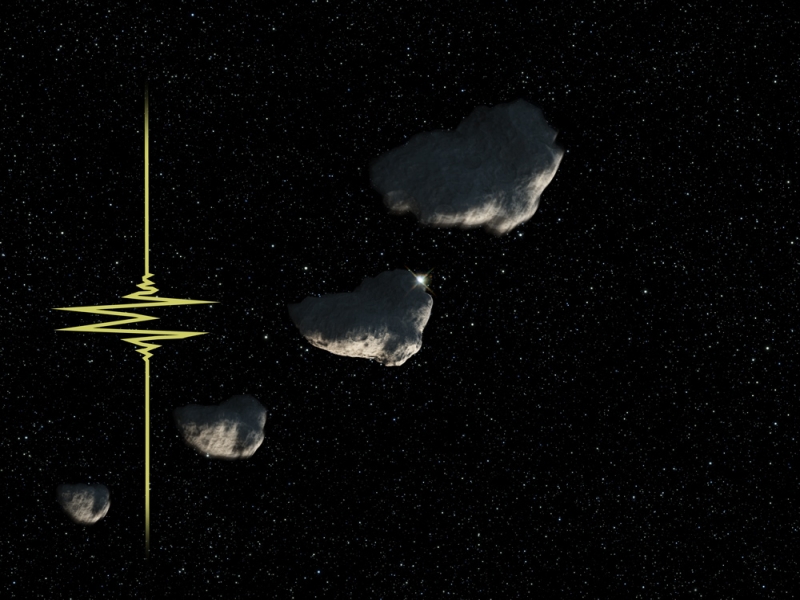
© NASA, ESA, and G. BaconNASA's Hubble Space Telescope recorded this brief event and allowed astronomers to determine that the KBO was only one-half of a mile across, setting a new record for the smallest object ever seen in the Kuiper Belt.
The tiny object - sized at roughly 3,200 feet - is much smaller than the previous object titled as the "smallest object ever seen", having dimensions some 50 times smaller. Its importance is that it's the first observational evidence for similar sized objects in Kuiper Belt; scientists estimate that these are being ground down through collisions. Therefore, they conclude that Kuiper Belt has been evolving and modifying for over more than 4.5 billion years.
Hilke Schlichting of the California Institute of Technology and her collaborators have reported the detection of this object in the December 17th issue of the journal
Nature. According to their paper, their achievement was accomplished using indirect imaging. This feat is amazing since NASA's Hubble Space Telescope usually sees objects only 100 times brighter, and even then it is done via direct observation; the newly detected object is so faint that it's ranked at 35th magnitude.
The Kuiper Belt is a region of the Solar System beyond the planets extending from the orbit of Neptune. It is similar to the known asteroid belt, although it is far larger - 20 times as wide and 20 - 200 times as massive. Like the asteroid belt, it consists mainly of small bodies, or remnants from the solar system's formation. While the asteroid belt is composed primarily of rock and metal, the Kuiper belt objects are composed largely of frozen volatiles (termed "ices"), such as methane, ammonia, and water.




Comment: One wonders, who sponsors these so-called researchers. Many studies dispute the conclusions reached above:
Cell Phones and Brain Cancer: The Real Story
Study Shows: Long Conversations on Mobile Phones Can Increase Risk of Cancer
The BioInitiative Report - The Dangerous Health Impacts of Microwave Radiation